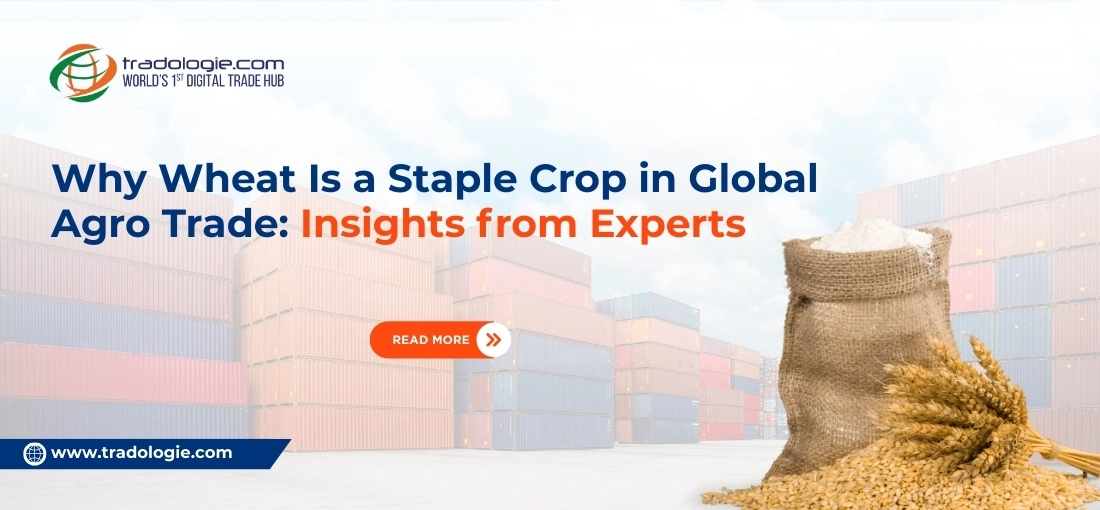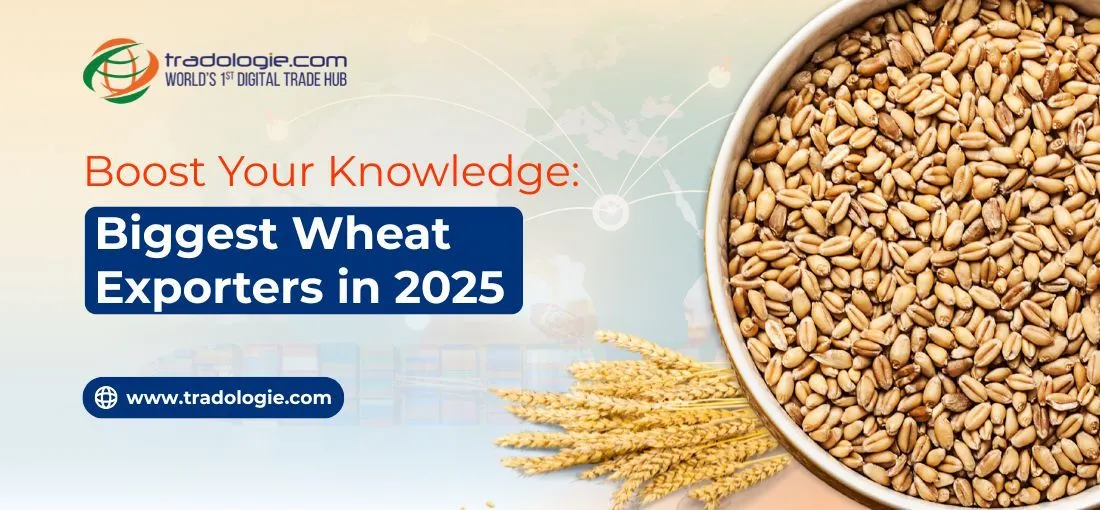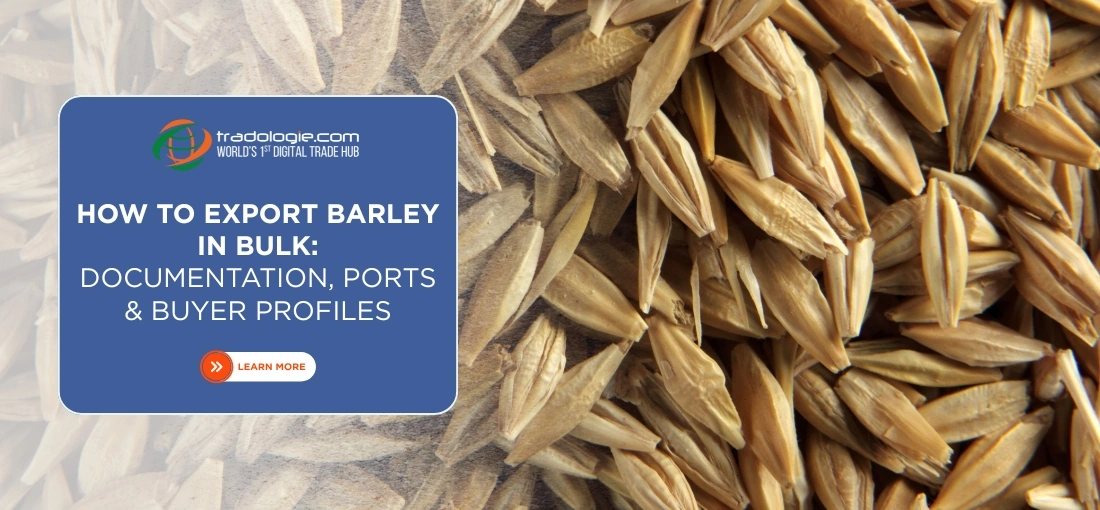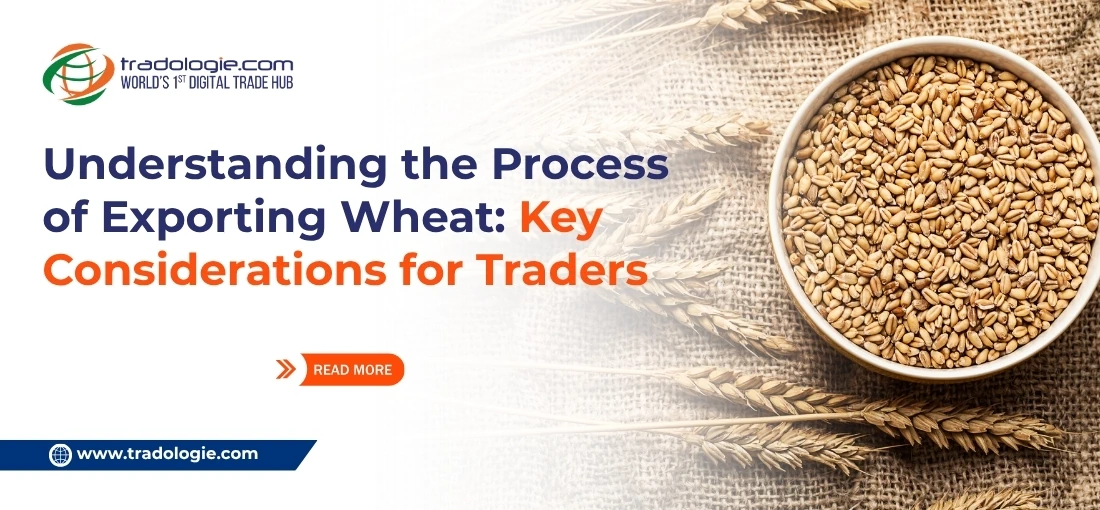Why Wheat Is a Staple Crop in Global Agro Trade: Insights from Experts
Wheat has long held its place as a cornerstone commodity in global agricultural trade. In 2023, international trade in wheat reached USD 65.8 billion, making it one of the most commercially significant food grains worldwide.
Its continued centrality in trade for wheat importers and sellers is not incidental. Rather, it is the result of a unique combination of production scalability, broad applicability across food systems, and long-standing integration into global policy and logistics frameworks.
Volume, Versatility, and Global Nutrition Dependence
Wheat's role in global food systems is deeply structural. It is cultivated in more than 120 countries and consumed in some form in virtually every part of the world. From a B2B standpoint, wheat’s utility stems from its:
- High caloric density for human consumption
- Process adaptability across product categories—bread, pasta, noodles, flour blends
- Long shelf life, enabling large-volume procurement and warehousing
- Consistent year-round trade, supporting uninterrupted supply to processors and bulk wheat importers
Unlike commodities whose demand is cyclical or niche, wheat is embedded in daily consumption cycles and national food reserves, making it a default trade priority for governments and food manufacturers alike.
Export Leadership: Structurally Competitive Origins
The production of wheat depends on the soil's supportive conditions juet like any other crop. The large production ensures that the country has ample stocks to export globally. In 2023, the top wheat exporters were as follows.
- Russia: USD 11 billion
- Australia: USD 9.7 billion
- Canada: USD 9.09 billion
- United States and France also remained top-tier origins
These countries dominate wheat exports due to their:
- Large-scale mechanized farming
- Stable climatic zones for hard and soft wheat production
- Well-integrated grain logistics, with efficient access to bulk shipping ports
- Government-backed grain boards or exporter alliances
For wheat importers, origin selection is based on grade availability (durum, soft red, hard red spring), protein content, milling yield, and port logistics.
Import-Heavy Economies: Wheat as a Strategic Commodity
Top wheat Importers like Egypt (USD 4B), China (USD 3.55B), and Indonesia (USD 3.49B) treat wheat not just as a food input but as a macro-economic stabilizer. These countries maintain wheat in state reserves, distribute it via public distribution systems, and integrate it into subsidized meal schemes.
For them, wheat sourcing is:
- Tender-based and multi-origin, hedging against climate and geopolitical risks
- Volume-focused, with shipments structured in 20,000-60,000 MT parcels
- Tied to fiscal planning, food price indices, and inflation control
This consistent, high-volume demand is what sustains wheat's position in global B2B trade—its consumption predictability and policy importance create dependable buyer markets across continents.
Wheat's Built-In Trade Advantage: Processing Efficiency
In the words of Erin Collier, Economist at the FAO's Trade and Markets Division:
"Wheat is a very important staple food commodity for many parts of the world, specifically the Near and Middle East and Northern Africa... Its widespread availability is crucial to meeting the 2030 targets for achieving zero hunger."
Wheat is one of the few grains that offers:
- High conversion yield in milling, translating to optimized input cost for processors
- Standardized global grading, which enables smoother contract enforcement
- Diversification into by-products like bran, gluten, starch, and ethanol feedstock
For buyers in food processing, wheat is preferred over rice or corn when flexibility in output formats is required—especially for blended flours, pasta products, and industrial baking.
Its traceable origin structure and lab-certifiable parameters (protein %, moisture, foreign matter, falling number) allow procurement teams to standardize SKUs for production.
Price Discovery, Futures, and Risk Management
Another reason wheat is a staple in B2B trade is the mature futures market surrounding it. The Chicago Board of Trade (CBOT) and MATIF in Europe provide pricing benchmarks that are globally recognized.
Buyers and sellers alike use wheat futures for:
- Hedging procurement risk
- Locking in forward prices for contracts
- Benchmarking CIF negotiations across origins
This ability to manage cost volatility adds to wheat's reliability in structured trade—something not all agro commodities offer.
Why Wheat Endures: The Long View for Traders
Despite short-term fluctuations in global output or logistics, wheat endures because:
- It is a default staple across cultures and geographies
- It fits into both humanitarian aid and retail systems
- It is versatile in processing and formulation
- It is supported by well-regulated trade instruments
- It is highly storied—both in warehousing and in commercial supply planning
Few commodities combine these operational, nutritional, and financial efficiencies. And this is why wheat, despite market dips or regional policy shocks, retains strategic status in global agro trade.
Conclusion
Wheat is not just another grain—it is a trade-anchored commodity with multi-sector relevance. From high-protein bread wheat for North African importers to soft wheat for Asian noodles, the crop fulfills complex sourcing objectives. Its consistency, storability, and international benchmarking make it the backbone of agro-commodity portfolios for traders, processors, and national procurement agencies alike.




